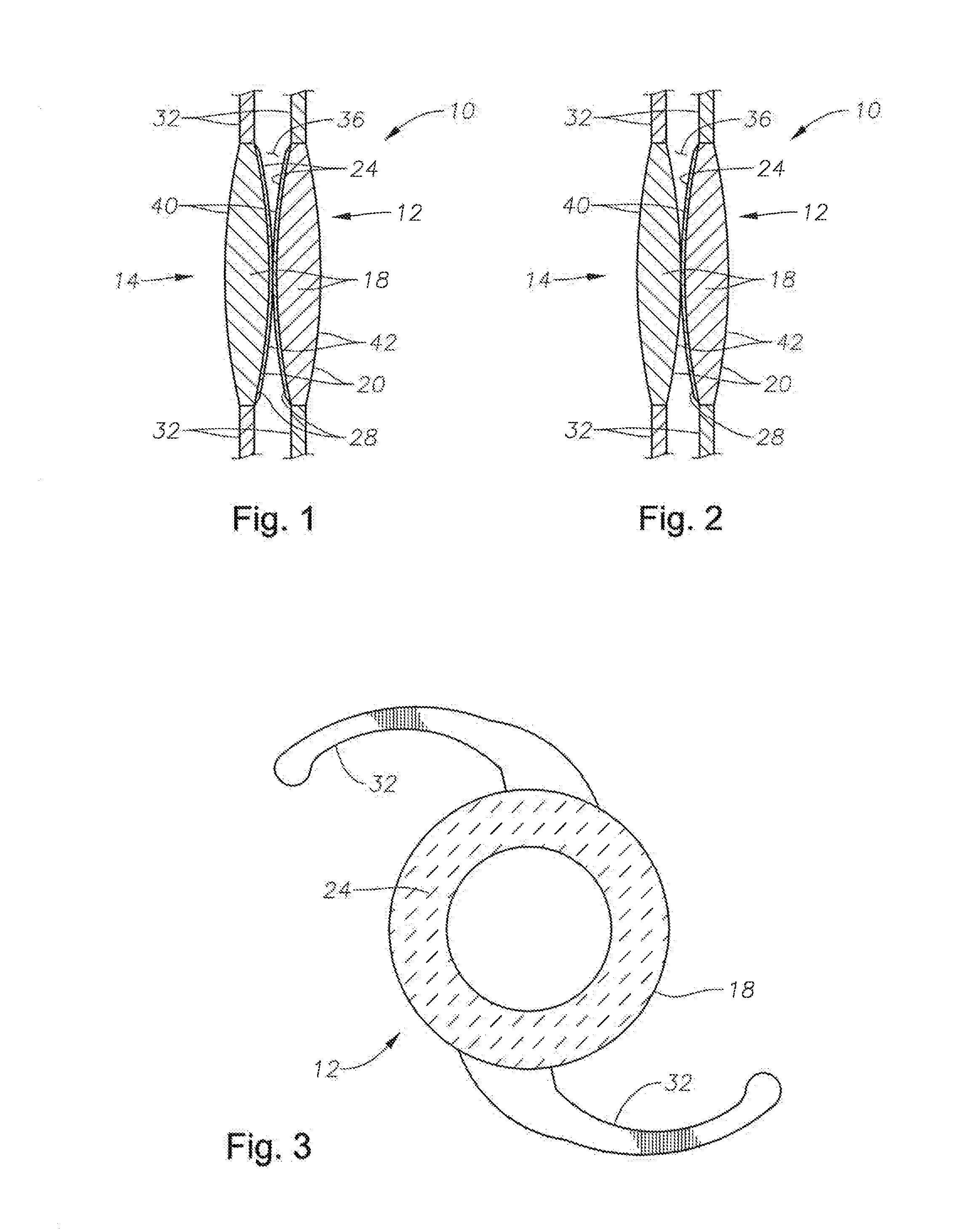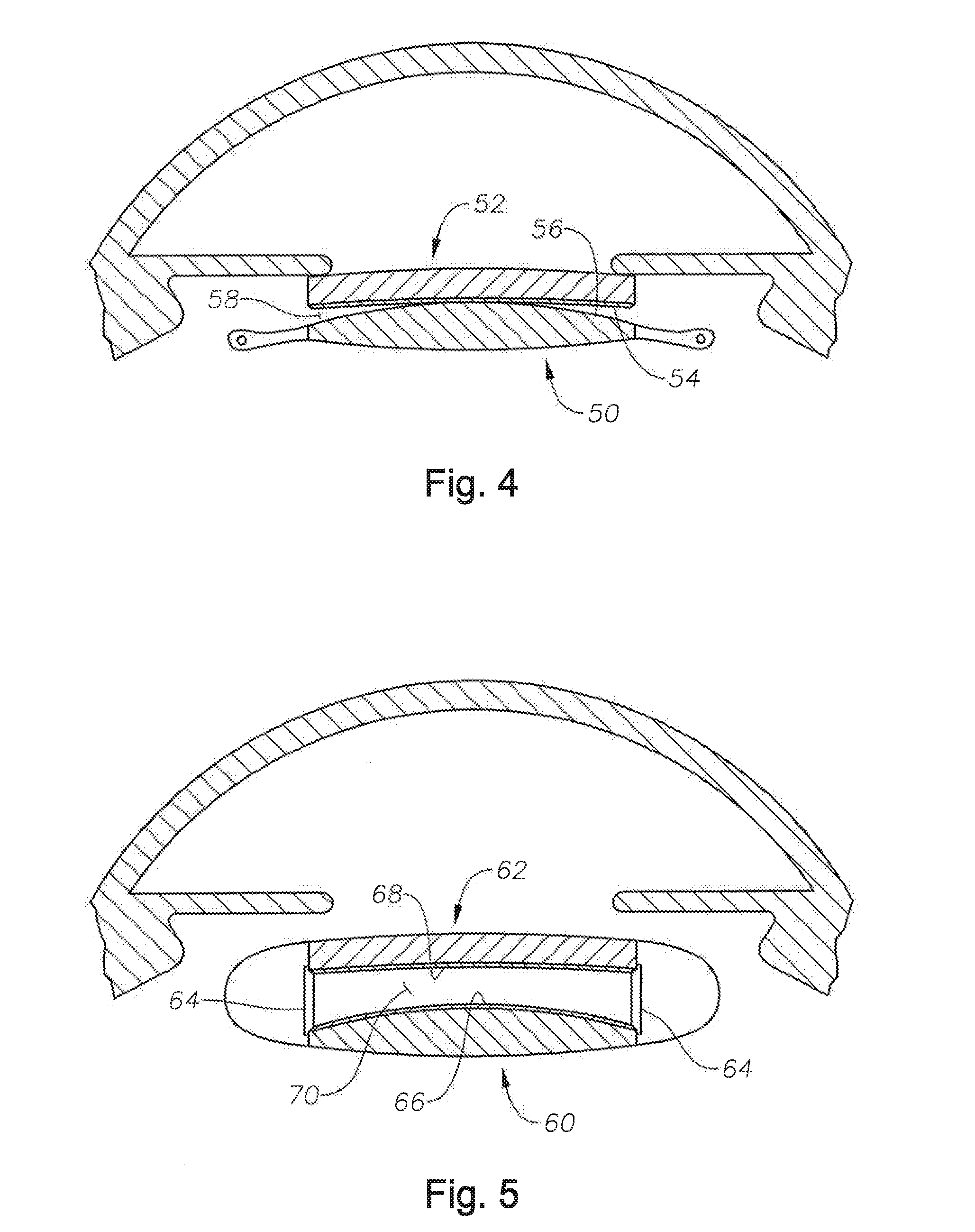Intraocular lenses with interlenticular opacification resistance
a technology of intraocular lens and opacification resistance, which is applied in the field of intraocular lens and intraocular lens system, can solve the problems of deteriorating vision and prone to posterior capsule opacification (pco), and achieve the effect of preventing opacification
- Summary
- Abstract
- Description
- Claims
- Application Information
AI Technical Summary
Benefits of technology
Problems solved by technology
Method used
Image
Examples
example
[0043]A hexamethyldisiloxane (HMDSO) RF plasma polymer film is deposited upon a plurality of IOLs. Initially, approximately 5 grams of HMDSO monomer is added to a 50-mL round bottom flask containing a magnetic stirring bar. The flask is then attached to a glass vacuum take-off adapter which is connected to a plasma chamber with a stainless steel gas line. Vapor flow rate is regulated through a metering valve located on the gas line. The flask is placed on a heating mantle which is seated on a stirring plate. The mantle is used to offset cooling of the flask due to expansion of the contents under high vacuum. This aids in maintaining a steady flow rate throughout the deposition process. Next, IOLs are placed in the center of the plasma chamber. The chamber is then sealed and vacuumed down to less than 10 mTorr. Next, the metering valve is opened for several minutes to allow the flask and HMDSO monomer to fully degas. With degassing complete, the valve is closed and the chamber is aga...
PUM
 Login to View More
Login to View More Abstract
Description
Claims
Application Information
 Login to View More
Login to View More - R&D
- Intellectual Property
- Life Sciences
- Materials
- Tech Scout
- Unparalleled Data Quality
- Higher Quality Content
- 60% Fewer Hallucinations
Browse by: Latest US Patents, China's latest patents, Technical Efficacy Thesaurus, Application Domain, Technology Topic, Popular Technical Reports.
© 2025 PatSnap. All rights reserved.Legal|Privacy policy|Modern Slavery Act Transparency Statement|Sitemap|About US| Contact US: help@patsnap.com



